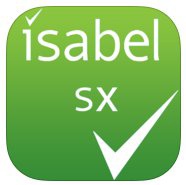- Privacy Policy
- Terms & Conditions
- Contact us
- ©Isabel Healthcare 2025
Why a symptom checker is now valued by doctors and health systems
 We have now moved almost 180 degrees from doctors dismissing symptom checkers as potentially harmful things for hypochondriacs right through to the stage where we now find doctors and healthcare institutions viewing them as tools that can help improve patient flows.
We have now moved almost 180 degrees from doctors dismissing symptom checkers as potentially harmful things for hypochondriacs right through to the stage where we now find doctors and healthcare institutions viewing them as tools that can help improve patient flows.
To be fair, some of this change of heart is due to the improvement of symptom checkers. No longer are they just simplistic scripts to help someone with a sore throat. Now, systems like Isabel are highly sophisticated professional grade tools. With added functionality such as triage tools and integrated pre-visit data collection forms, which capture the symptoms entered and possible diagnoses that come up, symptom checkers are now viewed as more helpful for busy providers and clinicians in a number of ways.
Where To Now?
Coordinating care across the continuum remains a problem for most healthcare organizations. Consumers and patients are given many choices for receiving care, meaning they often turn up at a place inappropriate for the attention needed, such as:
- In the Emergency Department, when they could have been handled at an Urgent Care location or by their primary care doctor
- To their primary care doctor when they could have been handled by a nurse practitioner or via an e-visit or tele-health consultation
- Outside of their system/network
Getting consumers to the correct venue of care in a timely manner remains a critical challenge for most health systems and plans. In the days when resources were abundant and the fee system was more generous, this wasn’t such a problem. Now, however, as efficient use of scarce resources has become important and the tide has finally turned with regard to payment structures, already overcrowded emergency departments with diminishing resources are being overwhelmed by patients seeking help, often inappropriately. Through no fault of their own, patients are just showing up where they think they can be seen the quickest. So it’s no surprise doctors and patients alike are warming to the idea of a symptom checker with a triage function, like the where to now? tool on Isabel.
Implementing symptom checkers
Like traffic on a highway, it only takes a small and marginal change to make the difference between free flowing traffic or a full-on traffic jam. In healthcare, it’s the difference between patients who need to be seen in the ED and the 30% to 40% who could have easily and appropriately been treated in a different care setting, e.g. clinic, urgent care, e-visit, etc.where a lower level of care is prescribed. Healthcare systems are therefore being driven to look at different ways to design patient workflows. There are few different ideas, all involving symptoms checkers:
- Help patients make a more informed decision about the healthcare venues available, by placing symptom checkers on their public websites and integrated into patient portals so they can better judge where they should seek care.
- Provide nurses on Nurse Call lines with symptom checkers on hand as another tool to help them triage. They are also asking patients to use the triage functions of symptom checkers prior to their appointments, with the results being used to help physicians decide which level of provider is best to see the patient.
- Symptom checkers integrated into e-visit workflows as a way to screen those patients who really can use an e-visit vs. those who should seek care through another setting.
All of these approaches help the provider get more value from their 10 to 15 minutes with the patient. By gathering the patient’s illness information and possible diagnosis prior to seeing them, the clinician can begin thinking about the most important questions to ask the patient to begin ruling in or out specific diseases. This benefits both parties in time, efficiency and quality of care.
If your institution is looking to integrate symptom checkers into their systems, take a look at our eBook on Successful Adoption of Diagnosis Decision Support Systems:

Jason Maude
Jason is the CEO and Co-founder of Isabel. Prior to co-founding Isabel, Jason spent 12 years working in finance and investment banking across Europe. His daughter, Isabel, fell seriously ill following a misdiagnosis in 1999 and this experience inspired Jason to abandon his city career and create Isabel Healthcare Ltd.
Subscribe Here!
Recent Posts
Isabel DDx Companion with ChatGPT Integration - to help you diagnose even faster
At Isabel Healthcare, we’ve always been driven by one goal: to make clinical reasoning faster,..Virtual Triage: Do more questions lead to better patient outcomes?
One of the common misconceptions related to virtual triage / symptom checker tools is that the more..List Of Categories
- Differential Diagnosis Decision Support
- Differential diagnosis
- Symptom Checker
- Symptoms
- Medical Error
- Patient Disease Information
- Disease
- Clinical Decision Support
- Diagnostic Decision Support
- Isabel 1 Minute Read
- Diagnosis Error
- Diagnosis Skills Cases
- Healthcare Informatics
- Clinical Reasoning
- Evidence-based Medicine
- Medical Education
- Patient Engagement
- Symptom Triage
- Nurse Practitioner Education
- Nursing Decision Support
- Partnership
- Public Health
- COVID-19
- EHR
- Patient Empowerment
- Patient Safety
- rare disease

Start your FREE Trial today
Try the Isabel Pro DDx generator for 30-days - no payment card details required.




